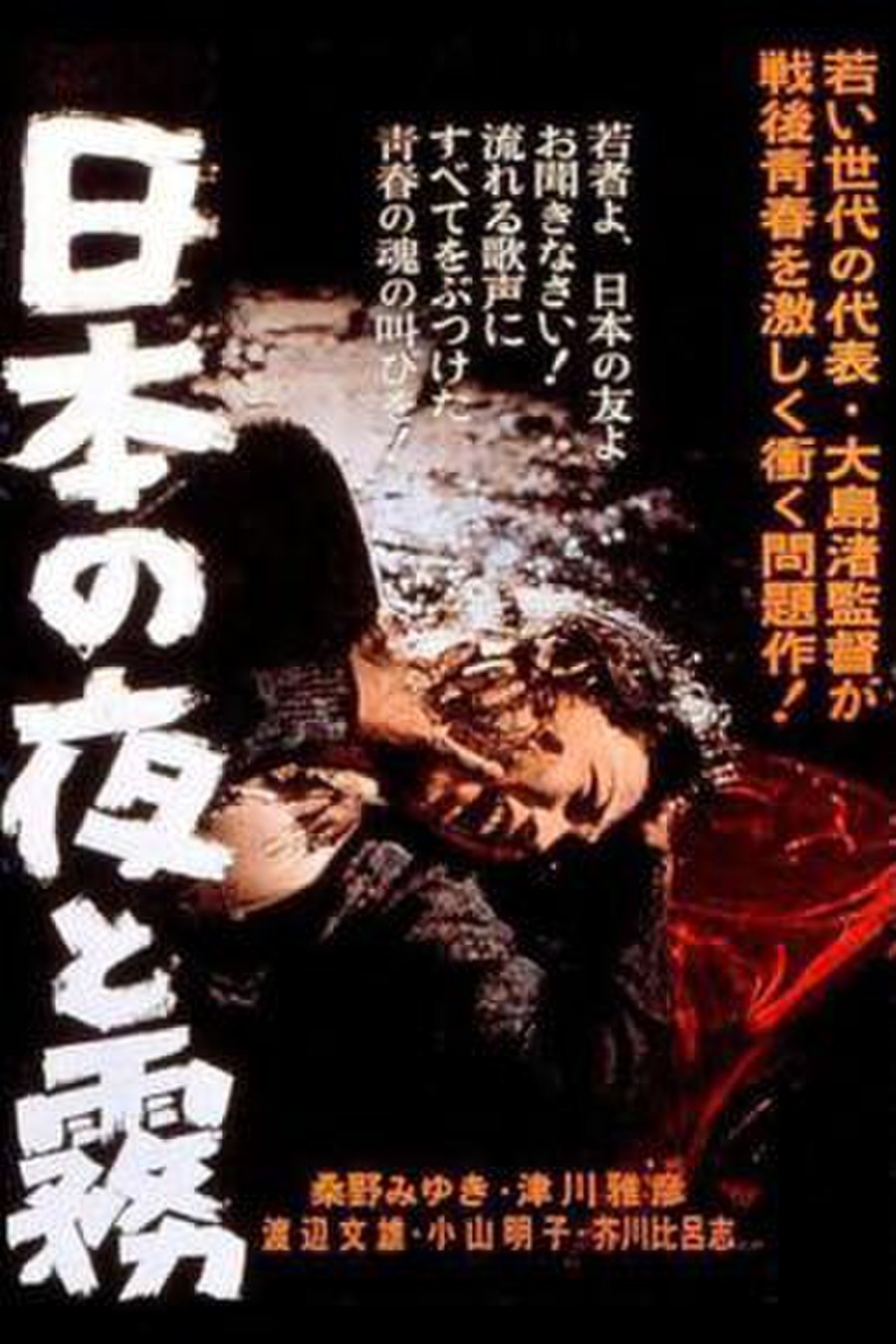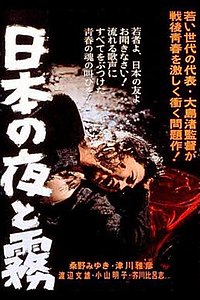
Night and Fog in Japan
is a 1960 Japanese drama film directed by Nagisa Ōshima. It deals with the contemporary Zengakuren opposition but also evokes the 1950 protests against the Anpo treaty; this political content is related to the particular approach of memory and interpersonal dynamics of social movements in the film.
Plot
In 1960, in the aftermath of the Anpo Protests against the US-Japan Security Treaty, uninvited guests interrupt the wedding ceremony between Nozawa, a journalist and former student radical of the 1950s, and Reiko, a current activist. They accuse the couple and assembled guests of forgetting their political commitments, invoking a tortured exploration of unresolved conflicts of a decade ago, when they were swept up in the student demonstrations. In flashbacks, personal and political wounds are reopened, focused on Nozawa's subjective experiences in both 1950 and 1960. Two characters, one dead by suicide, the other now a Stalinist politician, are the subject of greatest scrutiny. The memory of Takao, a young student who committed suicide after letting a "spy" free, is reconstructed as a criticism of the authoritarian leadership of the Zengakuren of 1950. Nakayawa, former student leader now Communist functionary, is castigated for his role in the tragedy and his possession of Misako, a much desired female student. Other forgotten comrades from 1950 and fresh from the bloody demonstrations of 1960 are invoked as political and personal challenges. In the end, night and fog envelops the guests as they stand immobile to the stilted speech of the unchanged Nakayawa: memory has been invoked, but it is unclear whether or not anything has changed.
More details
| author | Nagisa Ōshima |
|---|---|
| director | Nagisa Ōshima |
| editor | Keiichi Uraoka |
| genre | drama political social |
| keywords | anpo protests communist end stalinism stalinist uninvited guest wedding ceremony |
| musicBy | Riichiro Manabe |
| producer | Tomio Ikeda |
| productionCompany | Shochiku |
| publisher | Shochiku |
| theme | activists japanese |

